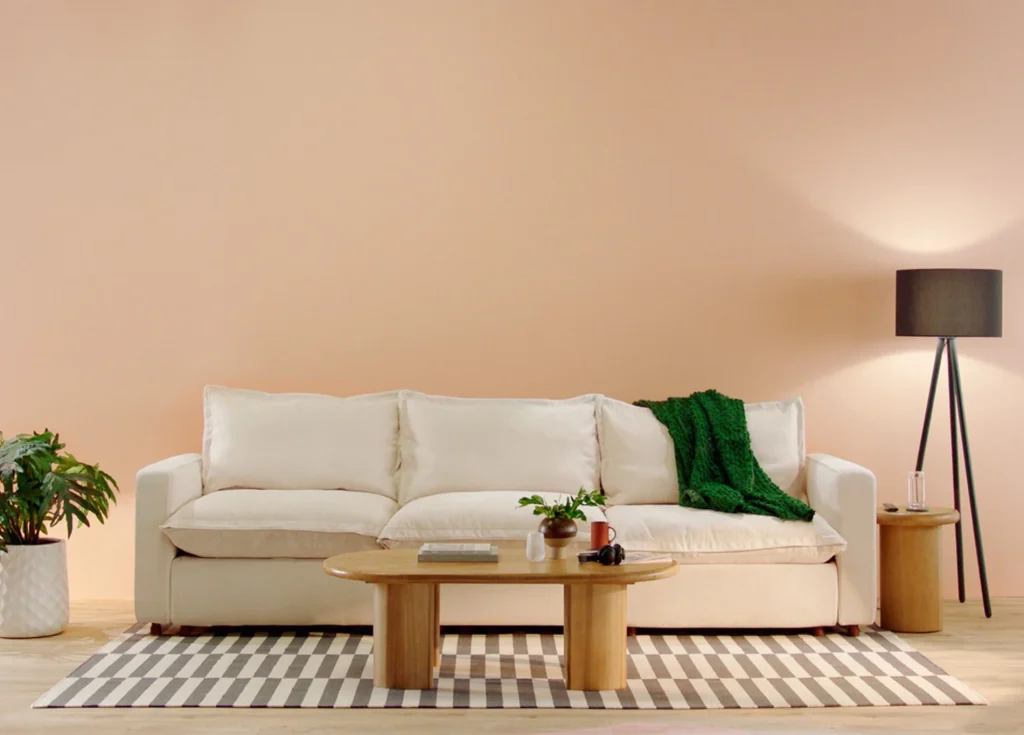A Guide to Choosing the Best Sofa Color

Finding the ideal sofa for your living room is an exciting step in crafting a space that feels like home. With an array of colors and shades available, selecting the perfect hue can seem overwhelming. This guide aims to simplify the process of choosing the best color for your sofa, which will serve as the focal point of your room. Whether you’re looking for a color that complements your decor or reflects your personality, this guide offers practical tips to help you make the best decision.
Understanding the Role of Color
Before diving into the specifics of picking a sofa color, it’s essential to understand how color influences interior design. Different hues can set various moods and affect the overall ambiance of your space:
- Warm colors: Reds, oranges, and yellows bring energy and warmth, fostering a lively and inviting atmosphere.
- Cool colors: Blues, greens, and purples promote relaxation and calm.
- Neutral colors: Whites, grays, and beiges are timeless and versatile, fitting into almost any decor.
Factors to Consider When Choosing a Sofa Color
Existing Color Scheme
Before selecting a sofa color, take a moment to evaluate your existing living room setup. The color of your walls, floors, and other furniture will guide your choices:
- Neutral base: If your room features neutral tones, you have more flexibility to choose bold colors for your sofa. A bright, saturated color can make a statement, while a complementary neutral creates a cohesive look.
- Colorful palette: If your room already has vibrant colors, you may want to opt for a sofa in a neutral shade or a complementary tone that harmonizes with the existing palette.
Desired Mood and Style
The color of your sofa has a significant impact on the overall mood of the room. Are you aiming for a serene retreat or a more energetic environment?
- For a calm, peaceful space, choose cool tones like soft blues and greens or neutrals such as gray and taupe.
- If you’re seeking a cozy atmosphere, consider earthy hues like terracotta, rust, or warm neutrals such as beige and ivory.
- If you want to inject vibrancy into your living room, go for bold colors like reds, yellows, and oranges.
Think about the role your sofa will play in the overall design. A contrasting color can create a bold statement, while a complementary hue will blend seamlessly with the rest of the room.
Practical Considerations
While the aesthetics of your sofa are crucial, don’t forget about the practical side of things. Consider your lifestyle, particularly if you have children or pets:
- Darker colors such as charcoal or patterned fabrics can hide stains and wear better over time.
- For low-maintenance options, choose performance fabrics that resist spills and dirt.
- Materials like leather or microfiber are easy to clean and durable while maintaining a stylish look.

Popular Sofa Colors and Their Effects
Timeless Sofa Colors
Neutral tones remain the most timeless choices for sofas. These colors offer versatility and can complement various interior styles:
- Gray: A versatile option that works with both modern and traditional interiors. Light gray creates a fresh, airy atmosphere, while dark gray exudes sophistication.
- Beige: A warm, inviting color that pairs well with natural elements and earthy tones.
- White: A classic option that brightens a room and serves as a clean canvas for other decorative elements. However, keep in mind that white sofas require frequent cleaning.
Neutral colors provide a flexible foundation, allowing you to easily update the room with seasonal accents like pillows or artwork.
Best Sofa Colors for Small Rooms
In smaller living spaces, the color of your sofa can help maximize the sense of space:
- Light blue: A soothing color that makes a room feel more open and peaceful.
- Blush pink: A soft and elegant hue that adds warmth without overwhelming the space.
- Light gray: A versatile neutral that pairs well with various styles and makes the room feel more spacious.
In addition to color, consider the scale of your furniture. For small rooms, choose compact options like loveseats or modular sofas that offer flexibility and functionality.
Best Sofa Colors for Large Rooms
Larger living spaces benefit from bold, rich sofa colors that add depth and define the area:
- Navy blue: A sophisticated hue that anchors a large room, creating a sense of intimacy.
- Emerald green: A luxurious color that adds personality and warmth to your space.
- Chocolate brown: A warm, inviting tone that creates a cozy and welcoming atmosphere.
These deep tones help define and break up large rooms, creating a more intimate and comfortable setting.
Making the Final Choice
The color you select for your sofa plays a pivotal role in your living room’s overall aesthetic. Ultimately, the best color is the one that aligns with your personal taste and complements your home’s decor. Take your time to explore various options, and don’t hesitate to seek out professional advice or visit a furniture store to test out colors in person. The right sofa color will enhance your space and reflect your unique style.
Frequently Asked Questions About Sofa Colors
What color sofa never goes out of style?
Neutral tones such as gray, beige, and white are timeless. These colors are versatile and fit seamlessly into any interior design, making them excellent choices for a sofa that will last for years.
What color sofa makes a room look bigger?
Lighter sofa colors, such as white, cream, and light gray, reflect light and create the illusion of more space. These shades are particularly beneficial in smaller rooms where maximizing space is essential.
Is it OK to have different colors of furniture?
Yes, mixing and matching furniture colors can add interest and reflect your personality. The key is to create balance and harmony in the space by choosing colors that complement each other or using a dominant color with accents to add contrast.







